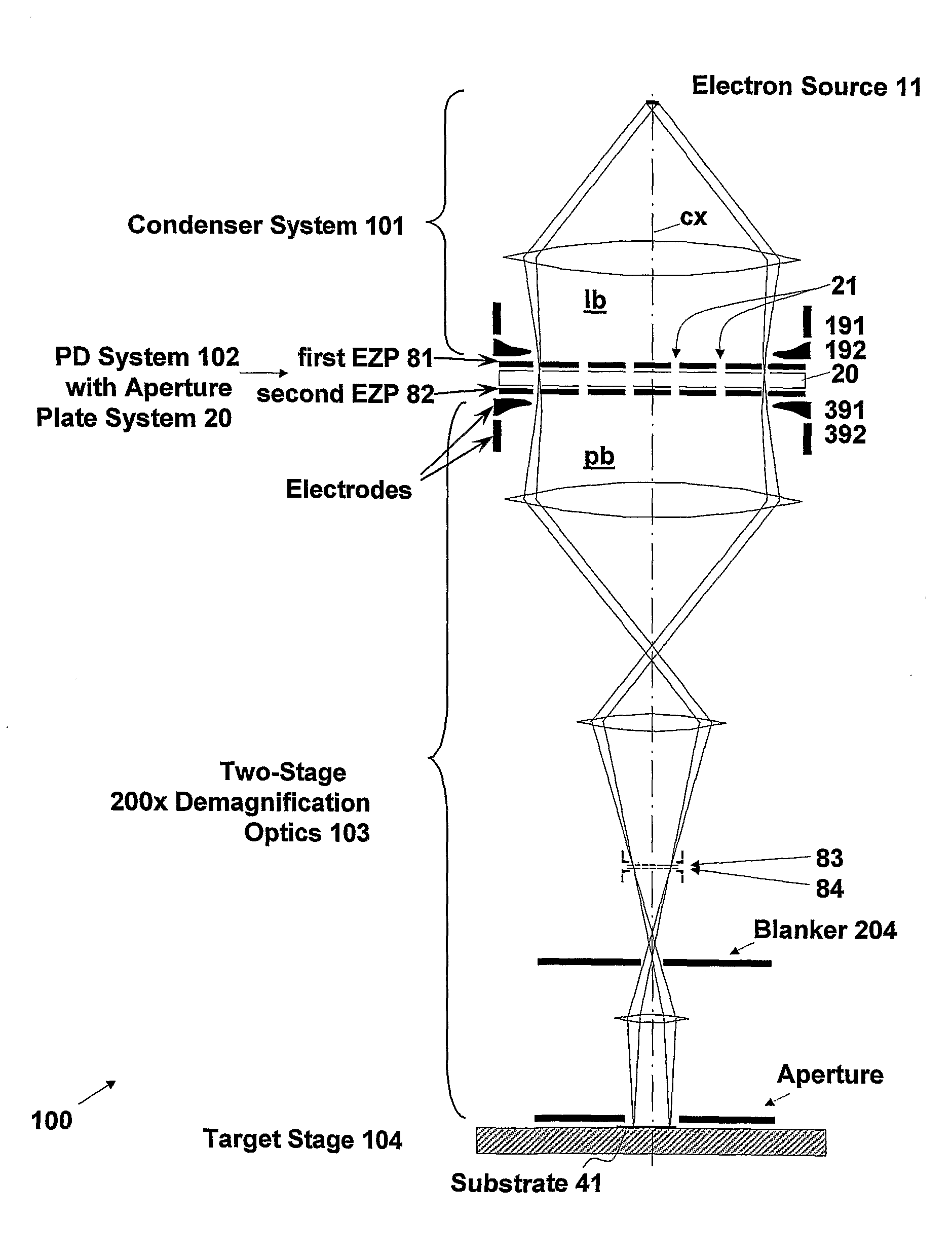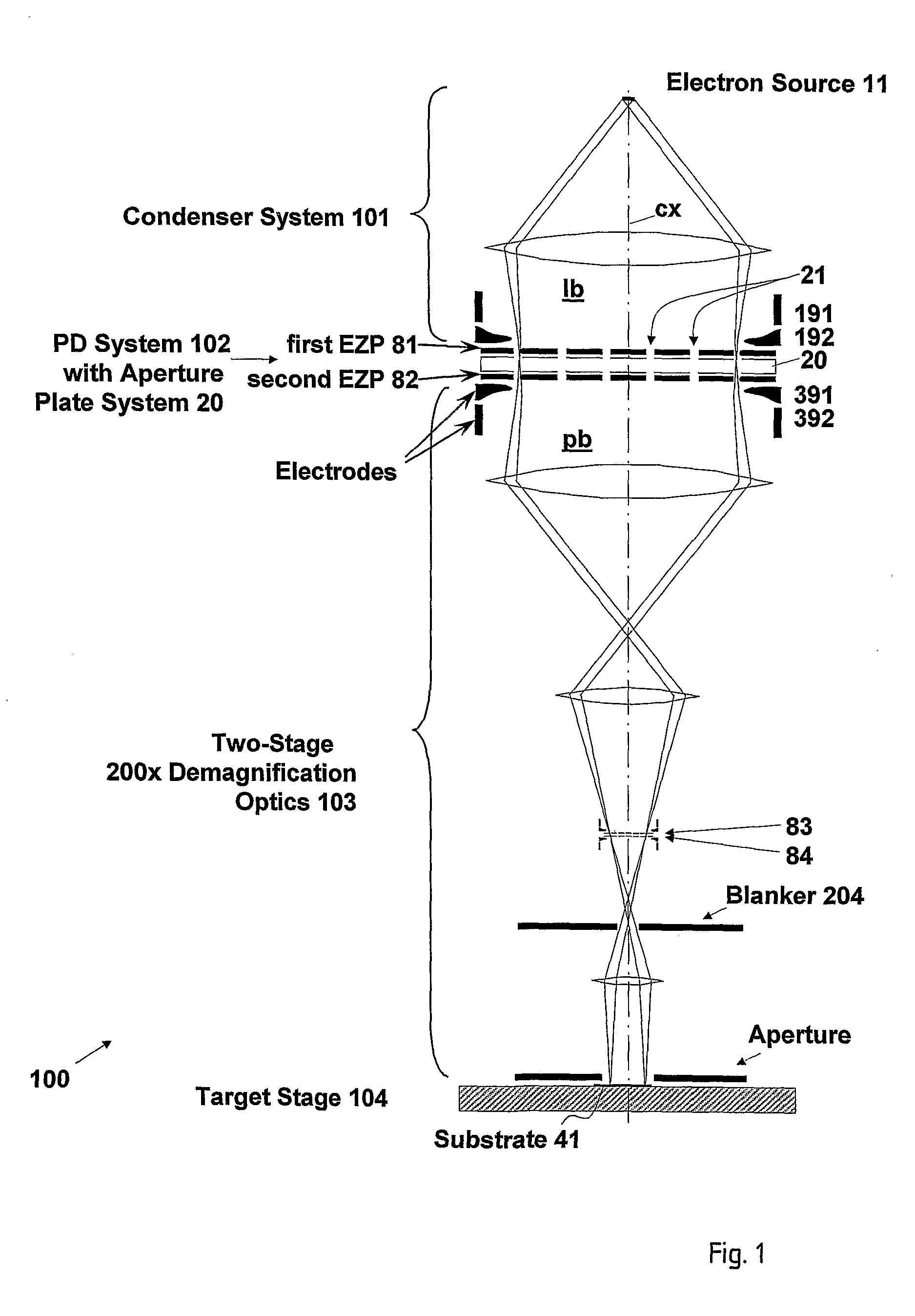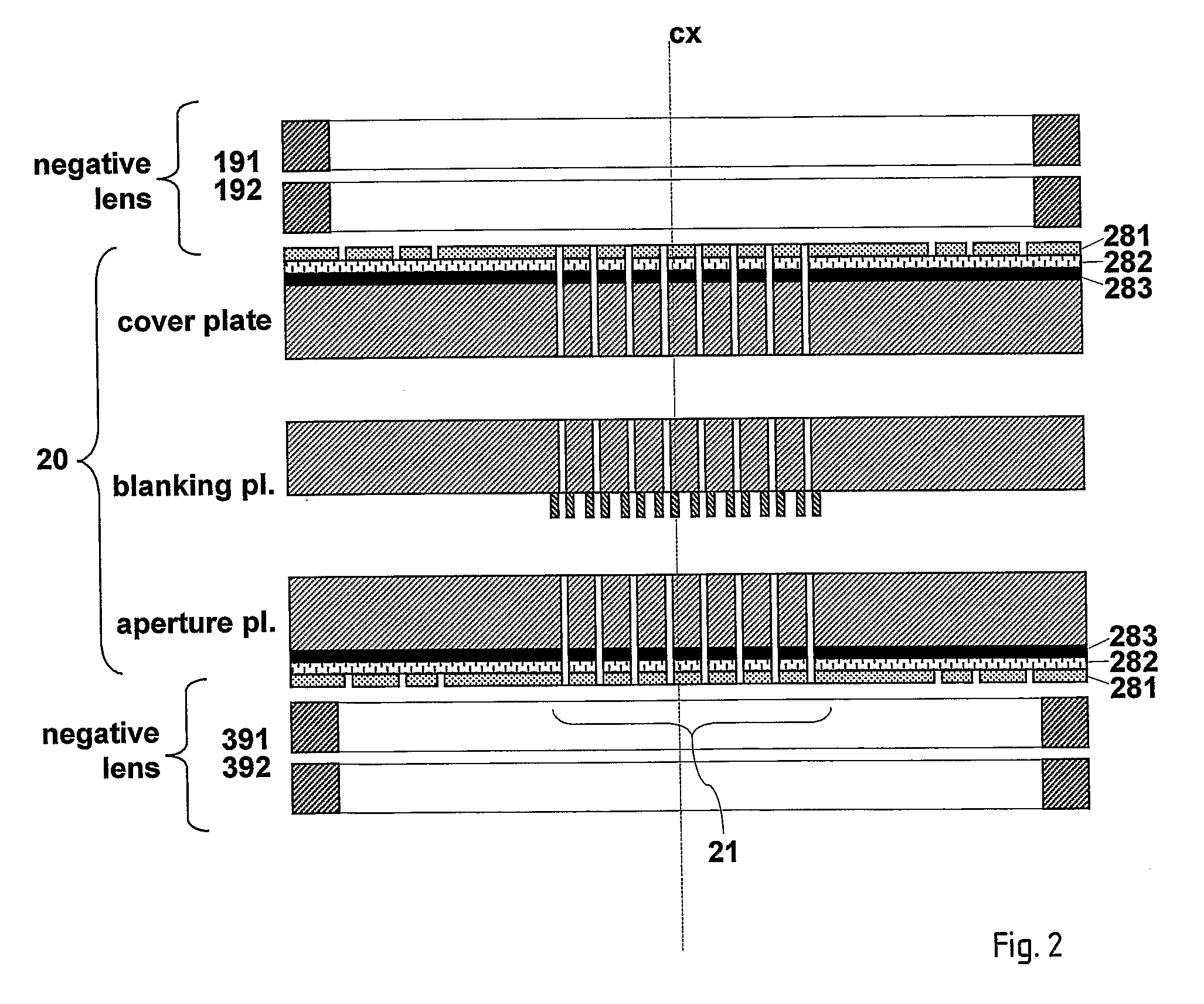Charged-particle exposure apparatus with electrostatic zone plate
a technology of electrostatic zone plate and exposure apparatus, which is applied in the field of improvement of particlebeam projection processing apparatus, can solve the problems of introducing distortions to the image of the aperture arrangement of the target, blocking the passage of a beamlet, and compensating imaging aberrations and distortions, so as to reduce the effects of various aberration effects
- Summary
- Abstract
- Description
- Claims
- Application Information
AI Technical Summary
Benefits of technology
Problems solved by technology
Method used
Image
Examples
Embodiment Construction
[0050]The present invention arranges for providing a particle-beam system using divergent lenses formed by tube electrodes (ring electrodes, annular electrodes) and a composite plate electrode. The composite plate electrode is, for instance, realized as a planar electrostatic zone plate (EZP) having a multitude of multi-zone electrodes. The EZP comprises holes for the passage of the particle beam through the apertures of the PD device and is arranged in the beam path, perpendicular to the optical axis. The system of tube electrodes and EZP can be integrated to the illuminating system and / or to the projection system. (Correspondingly, the EZP is immediately in front of or after the PD device, respectively.) It is important to note that in the framework of this disclosure, the term tube electrodes also includes multipole electrodes, for example octupoles, which have tubular or annular shape as a whole. In an advanced embodiment of the invention, the EZP can be integrated additionally ...
PUM
 Login to View More
Login to View More Abstract
Description
Claims
Application Information
 Login to View More
Login to View More - R&D
- Intellectual Property
- Life Sciences
- Materials
- Tech Scout
- Unparalleled Data Quality
- Higher Quality Content
- 60% Fewer Hallucinations
Browse by: Latest US Patents, China's latest patents, Technical Efficacy Thesaurus, Application Domain, Technology Topic, Popular Technical Reports.
© 2025 PatSnap. All rights reserved.Legal|Privacy policy|Modern Slavery Act Transparency Statement|Sitemap|About US| Contact US: help@patsnap.com



